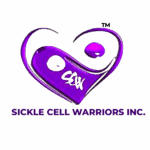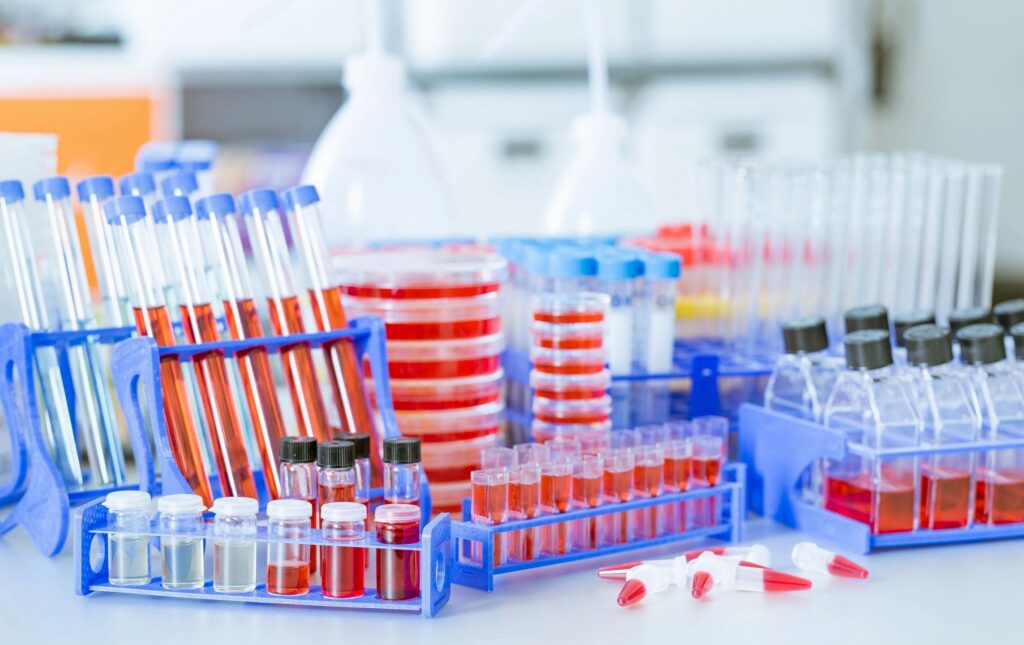GBT Announces Positive Top-line Data from Part A of the Phase 3 HOPE Study of Voxelotor in Sickle Cell Disease
Primary Endpoint Achieved; 58 Percent of Patients on Voxelotor Dosed with 1500 mg at Week 12 Exceeded 1 g/dL Increase in Hemoglobin Versus 9 Percent of Placebo (p<0.0001)
Company Met with FDA on June 25 and Is in Discussions on Potential Accelerated Approval Based on Hemolytic Anemia Efficacy as Assessed by Primary Endpoint
Numerically Fewer Vaso-occlusive Crisis (VOC) Episodes
in Each Voxelotor Arm Versus Placebo
SOUTH SAN FRANCISCO, Calif. – June 27, 2018 – Global Blood Therapeutics, Inc. (GBT) (NASDAQ: GBT) today announced the completion of a planned review of Part A of the Phase 3 HOPE (Hemoglobin Oxygen Affinity Modulation to Inhibit HbS PolymErization) Study. This study evaluates voxelotor for the treatment of sickle cell disease (SCD). On the primary endpoint (the proportion of patients with greater than 1 g/dL increase in hemoglobin versus baseline), a statistically significant increase was demonstrated with voxelotor at both the 1500 mg and 900 mg doses after 12 weeks of treatment versus placebo.
“Given the well-established association between chronic hemolytic anemia and SCD-related morbidity and mortality, we believe the clinically meaningful increase in hemoglobin and improvement in hemolysis together with the safety profile demonstrated in Part A are highly encouraging,” said Ted W. Love, M.D., president and chief executive officer of GBT. “Based upon voxelotor’s robust impact on hemolytic anemia, we believe it meets the standard for accelerated approval, and we look forward to providing further updates on our regulatory discussions as soon as possible, but no later than year-end. We are grateful to the patients and families who have participated in our clinical studies, allowing us to potentially deliver this transformative therapy to the SCD community.”
HOPE Study Part A Data
Results from the Part A analysis in 154 patients showed the following:
Efficacy and Safety
• 58 percent of patients taking the 1500 mg dose (p<0.0001) and 38 percent of patients taking the 900 mg dose (p=0.0021) achieved a greater than 1 g/dL increase in hemoglobin at 12 weeks versus 9 percent of patients taking placebo. This compares favorably to the hemoglobin increase assumption agreed to with the U.S. Food and Drug Administration (FDA) in the HOPE Study protocol of a 35 percent response.
• Statistically significant and dose-dependent improvements in hemoglobin, reticulocytes and bilirubin occurred with both voxelotor doses, further demonstrating an improvement in hemolytic anemia.
• Improvements in these clinical measures of anemia and hemolysis were similar in patients with or without background use of hydroxyurea. Approximately 64 percent of patients enrolled in Part A are on background use of hydroxyurea.
• There were numerically fewer VOC episodes in both voxelotor groups than in the placebo group, which as anticipated did not reach statistical significance due to limited patient follow-up.
• The patient reported outcomes (PRO) data were difficult to interpret due to low baseline symptom scores and high inter-subject and intra-subject variability. Given this, GBT does not plan to utilize the PRO as a key secondary endpoint.• Voxelotor was generally safe and well tolerated with similar safety profiles between the two doses. There was no evidence of tissue hypoxia at either dose.
The independent Data and Safety Monitoring Board (DSMB) completed its most recent clinical safety review in May 2018 and did not identify safety concerns with voxelotor at either dose level across all patients dosed in the ongoing SCD clinical program, including adult patients in the Phase 3 HOPE Study and adolescent patients in the HOPE-KIDS 1 (GBT440-007) Study. The DSMB supported the initiation of dosing in children as young as age 4.
GBT plans to present results from Part A at a medical meeting later this year.
Based on the positive Part A results and ongoing regulatory discussions, GBT continues to dose Part A patients, plus approximately 100 additional patients across all three treatment arms, to gather more data. At this time, GBT does not plan additional enrollment until it completes discussions with the FDA.
“The pathophysiology and morbidity associated with SCD result from two distinct pathways: hemolytic anemia and vaso-occlusion. New therapies that address each pathway are important and desperately needed,” said Elliot Vichinsky, M.D., director, Comprehensive Center for Sickle Cell Disease, UCSF Benioff Children’s Hospital Oakland. “Increasing hemoglobin levels by reducing hemolysis in SCD patients is likely to decrease morbidity and mortality.”
About the HOPE Study
The HOPE Study is a randomized, double-blind, placebo-controlled, multi-national study that enrolled patients age 12 and older with SCD who had had at least one episode of VOC in the previous year. The study was originally designed in two parts: Part A compared voxelotor administered at doses of 900 or 1500 mg per day versus placebo in 154 patients treated for at least 12 weeks, and Part B planned to enroll 250 patients randomized to placebo or a dose of voxelotor selected from Part A.
The main objectives of Part A were to select the optimal dose, define the first rank secondary endpoint for Part B, and qualify the patient-reported outcome (PRO) instrument. The primary efficacy endpoint is the proportion of patients who achieve a greater than 1 g/dL increase in hemoglobin at 24 weeks of treatment compared with baseline. Key secondary efficacy endpoints evaluated in Part A were the effect of voxelotor on SCD symptom exacerbation as measured by the PRO instrument, overall SCD symptoms as measured by the PRO instrument, and traditionally defined VOCs.
About Accelerated Approval
The FDA grants accelerated approval under subpart H for new drugs that address serious or life-threatening illnesses and appear to provide meaningful therapeutic benefit to patients over existing treatments. The FDA may grant marketing approval for a new drug product on the basis of adequate and well-controlled clinical trials establishing that the drug product has an effect on a surrogate endpoint that is reasonably likely to predict clinical benefit. Drugs approved under subpart H are required to be further evaluated in post-marketing studies to further demonstrate clinical benefit.
About Sickle Cell Disease
SCD is a lifelong inherited blood disorder. It is caused by a genetic mutation in the beta-chain of hemoglobin. This leads to the formation of abnormal hemoglobin known as sickle hemoglobin (HbS). In its deoxygenated state, HbS has a propensity to polymerize, or bind together. This causes long, rigid rods within a red blood cell (RBC) to form. The polymer rods deform RBCs to assume a sickled shape. This causes them to become inflexible, which causes hemolytic anemia (the destruction of RBCs). This can eventually lead to multi-organ damage and early death. This sickling process also causes blockage in capillaries and small blood vessels. Beginning in childhood, SCD patients suffer unpredictable and recurrent episodes or crises of severe pain. This is due to blocked blood flow to organs, which often lead to psychosocial and physical disabilities.
About Voxelotor in Sickle Cell Disease
Voxelotor (previously called GBT440) is being developed as an oral, once-daily therapy for patients with SCD. Voxelotor works by increasing hemoglobin’s affinity for oxygen. Since oxygenated sickle hemoglobin does not polymerize, GBT believes voxelotor blocks polymerization and the resultant sickling of red blood cells. With the potential to improve hemolytic anemia and oxygen delivery, GBT believes voxelotor may potentially modify the course of SCD. In recognition of the critical need for new SCD treatments, the U.S. FDA granted voxelotor Breakthrough Therapy, Fast Track, Orphan Drug and Rare Pediatric Disease designations for the treatment of patients with SCD. The European Medicines Agency (EMA) included voxelotor in its Priority Medicines (PRIME) program. The European Commission (EC) designated voxelotor as an orphan medicinal product for the treatment of patients with SCD.
GBT is currently evaluating voxelotor in the HOPE (Hemoglobin Oxygen Affinity Modulation to Inhibit HbS PolymErization) Study, a Phase 3 clinical study in patients age 12 and older with SCD. Additionally, voxelotor is being studied in the ongoing Phase 2a HOPE-KIDS 1 Study, an open-label, single- and multiple-dose study in pediatric patients (age 6 to 17) with SCD. HOPE-KIDS 1 is assessing the safety, tolerability, pharmacokinetics and exploratory treatment effect of voxelotor.
About GBT
GBT is a clinical-stage biopharmaceutical company. They are determined to discover, develop and deliver innovative treatments that provide hope to underserved patient communities. GBT is developing its lead product candidate, voxelotor, as an oral, once-daily therapy for sickle cell disease. To learn more, please visit www.gbt.com and follow the company on Twitter @GBT_news.
Forward-Looking Statements
Statements we make in this press release may include statements that are not historical facts and are considered forward-looking within the meaning of Section 27A of the Securities Act of 1933, as amended and Section 21E of the Securities Exchange Act of 1934, as amended. We intend these forward-looking statements, including statements regarding the therapeutic potential and safety profile of voxelotor, our ability to implement and complete our clinical development plans for voxelotor, our ability to engage in continued discussions with the FDA and the outcome of those discussions, the availability of accelerated approval, our ability to generate and report data from our ongoing and potential future studies of
voxelotor (including our ability to generate additional data from patients enrolled in our ongoing Phase 3 HOPE Study), the sufficiency of our data to support an application for regulatory approval, regulatory review and actions relating to voxelotor, and the timing of these events, to be covered by the safe harbor provisions for forward-looking statements contained in Section 27A of the Securities Act and Section 21E of the Securities Exchange Act and are making this statement for purposes of complying with those safe harbor provisions.
These forward-looking statements reflect our current views about our plans, intentions, expectations, strategies and prospects, which are based on the information currently available to us and on assumptions we have made.
We can give no assurance that the plans, intentions, expectations or strategies will be attained or achieved, and furthermore, actual results may differ materially from those described in the forward-looking statements and will be affected by a variety of risks and factors that are beyond our control.
Risks
These include, without limitation, the risks that our clinical and preclinical development activities may be delayed or terminated for a variety of reasons, that results of clinical trials may be subject to differing interpretations, that regulatory authorities may disagree with our clinical development plans, including the sufficiency of our clinical data and of our primary and other key endpoints in our Phase 3 HOPE Study of voxelotor to support approval, or require additional studies or data to support approval or further clinical investigation of voxelotor.
Drug-related adverse events may be observed in clinical development, that data and results may not meet regulatory requirements or otherwise be sufficient for further development, regulatory review or approval, and that we may need to devote additional time and resources to meet these regulatory requirements, along with those risks set forth in our Annual Report on Form 10-K for the fiscal year ended December 31, 2017 and our Quarterly Report on Form 10-Q for the quarter ended March 31, 2018. As well as discussions of potential risks, uncertainties and other important factors in our subsequent filings with the U.S. Securities and Exchange Commission. Except as required by law, we assume no obligation to update publicly any forward-looking statements. This could be a result of new information, future events or otherwise.

